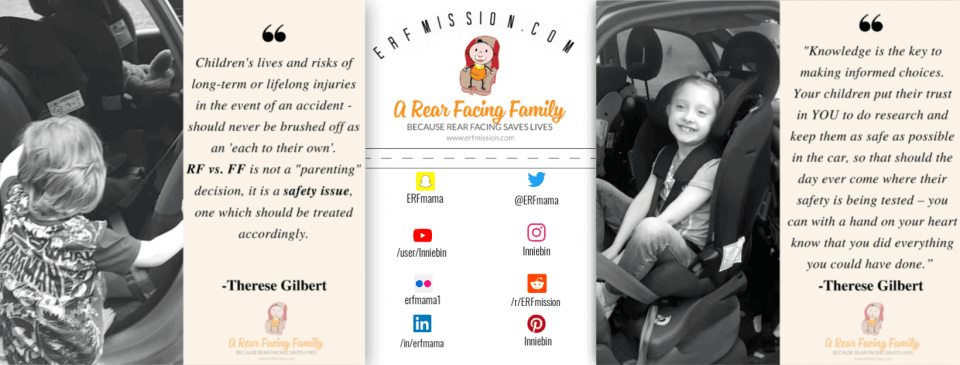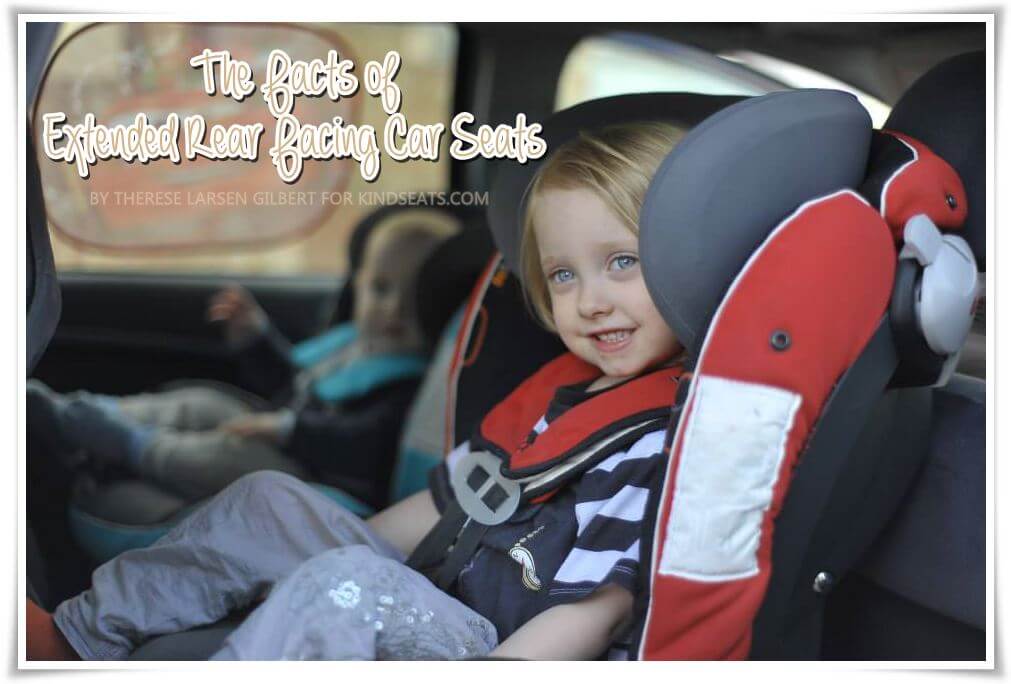Most people are aware of the infant car seats being rear facing, or facing backwards as some would say. This is the first car seat you buy when having a baby. But did you know that when it’s time to buy a new car seat for your baby – once they have outgrown their infant car seat (Group 0/0+) the safest car seat on the market for your baby – is an extended rear facing car seat?
What is an ‘Extended Rear Facing’ car seat?
An ‘extended rear facing car seat’ or ‘ERF seat’ as it usually goes by, is a car seat for toddlers and preschoolers that are – just like the infant car seat, facing backwards. Rear facing.
They are divided into these groups:
- 0+/1 (From birth to 18kg/40lbs)
- 0+/1/2 (From birth to 25kg /55lbs)
- Group 1 (From 9kg /20lbs -18kg/40lbs)
- Group 1 / 2 (From 9kg /20lbs -25kg/55lbs)
It was long believed that once the infant car seat was outgrown, the natural car seat to buy was a forward facing toddler car seat (Group 1). However for over 50 years, in Sweden, the natural way for children to travel has been rear facing. Why?
Because several studies through the years have proven that rear facing – is the safest way for all children under the age of 4-years-old to travel.
In the UK, the British Medical Journal released a statement in 2009 – stating that rear facing was the safest way to travel for all children under the age of 4 years old, this put to bed the notion that rear facing car seats were only beneficial to Swedish children.
No longer is this just a Swedish thing or a Scandinavian thing. In America now, several states have passed a law which prevents children under 2-years-old from travelling forward facing. Several American car seat manufacturers have also put a forward facing age limit on their car seats – to 2-years-old.
In 2011, The American Academy of Pediatrics released a statement declaring that children needed to be kept rear facing to at least 2 years old, but also to continue to rear face as long as possible.

But what is it that makes ‘ERF’ so much safer?
What makes it safer is simple physics and the human anatomy.
Children are not small adults. Their anatomy is vastly different, and their bones and spine are not fully fused together yet. This puts them at great risk in the event of an accident.
A baby’s head is 25% of its body weight, compared to an adult who’s head is only 6% of the body weight. Before the age of 3, a child’s spine consists of vertebra who are largely connected by cartilage – not bone. They are not fused together. The fusing of the vertebral only starts to happen after the age of 3 and isn’t finished until approximately age 6.
The photo shows the vertebrae of a one-year-old (left), and those of a six-year-old (right). You can clearly see the difference on the bones.

This means that even though bendy, their neck muscles and spine is very weak, which puts them at great risk in the event of an accident.
When the seat is facing against the direction of travel – the child is pushed into the seat which supports the neck and spine, cushioning it and the load forces are spread over a larger area.
But when the child is forward facing – the child is thrown outwards of the seat, putting a tremendous amount of force load on the fragile neck and spine, which can have severe consequences such as internal decapitation and spinal injuries.
In a crash at 50km/h, the neck of a forward facing child is subjected to crash forces of 180-300kg. For a child to avoid injury, these loads should never exceed 130 kg.
In a rear-facing seat, the neck loads are only 40-80kg.
You see, your child’s spinal column is in risk of stretching as far as 2 inches when forward facing in a car crash. That may not sound like a lot – but it only takes ¼ of an inch for the spinal cord inside the column to sever…
Parental choice?
Choosing whether or not you should buy a ‘forward facing car seat’ or an ‘extended rear facing car seat’ should not be based on parental choice. The reason being that you are not selecting a parenting method, you are not choosing whether or not to paint a nursery “boy” or “girl” colour – you are selecting a life-saving device for your vehicle.
This choice should be based upon the facts presented to you so that you can make an informed decision based upon those facts.
And the facts are that choosing an extended rear facing car seat – is the safest choice for your child.
” Knowledge is the key to making informed choices. Your children put their trust in YOU to do research and keep them as safe as possible in the car, so that should the day ever come where their safety is being tested – you can with a hand on your heart know that you did everything you could have done.” -Therese Gilbert


This is the first article (of many) I wrote for kindseats.com. As they have given their permission, I will continue to post my articles right here on my blog after they have been published by the company on their website/blog.
I hope these articles will help you understand how very important rear facing is to the children in your care, be them your own or others and I hope that after reading these you learn something useful to teach others and spread the word.
The main focus of my articles is of course rear facing – but we will travel between car seat comparisons, crash testing, typical myths and so forth. Which reminds me! Please do check out my “Debunking Myths” series here on the blog as well as my “tip of the day” series – I am told they are very helpful. :)
I don’t put a reference list in – but for most of my articles regarding extended rear facing, if you wish to see them, they are right here on the blog on the top menu under “downloads”. It’s a full PDF file of all the extended rear facing research available on the net. If you can’t find something or are looking for something very specific, please let me know and I’ll try my hardest to help you find it. :)

Therese has completed the ‘Advanced Child Car Seat Training Course’ at TRL (Transport Research Lab) and is a CPD accredited car seat expert. She blogs about in-car safety, car seats, tips, reviews, giveaways and advice. She’s a mum on a mission to change the law and raise awareness. She is also a breastfeeding advocate and gentle parenting promoter who loves cloth nappies, baby-wearing, BLW and co-sleeping/bed-sharing.

